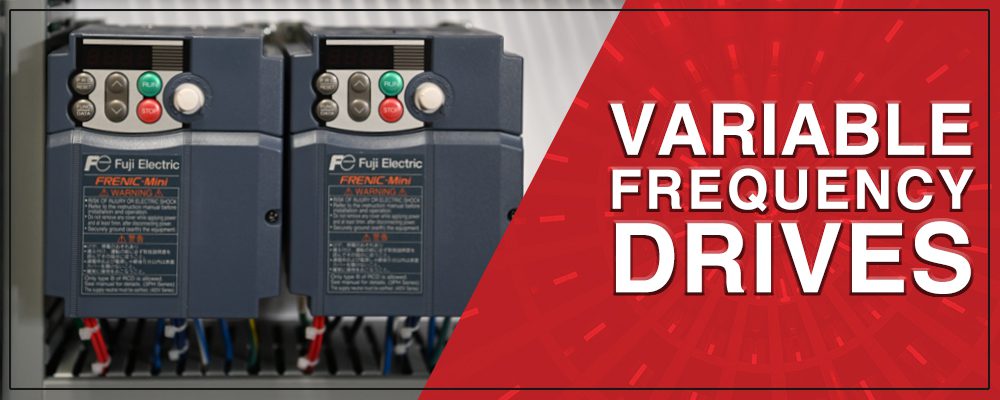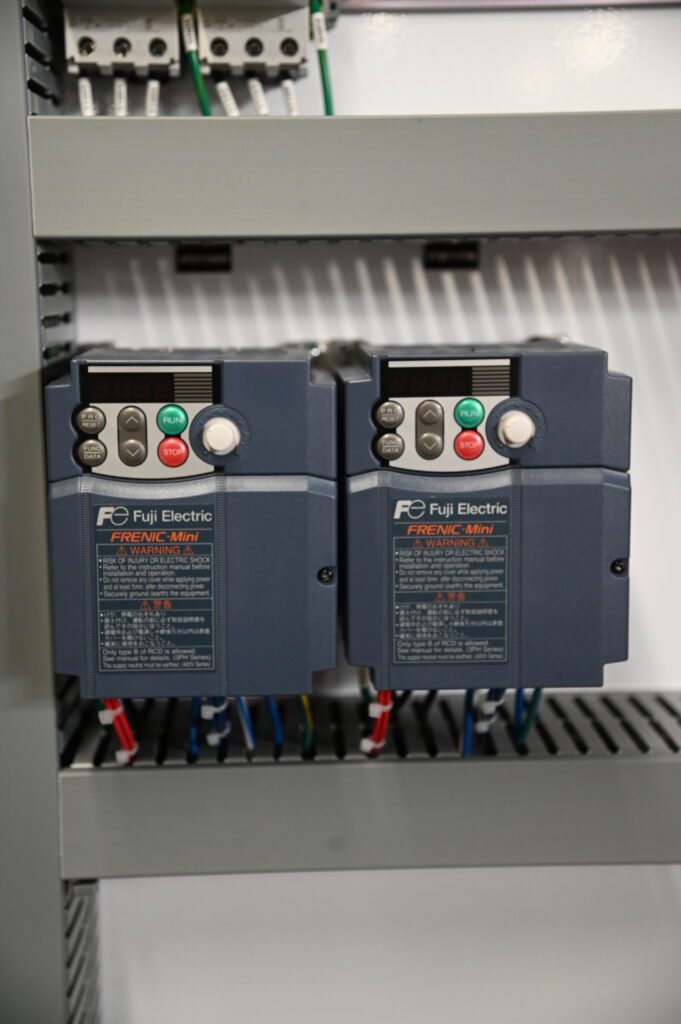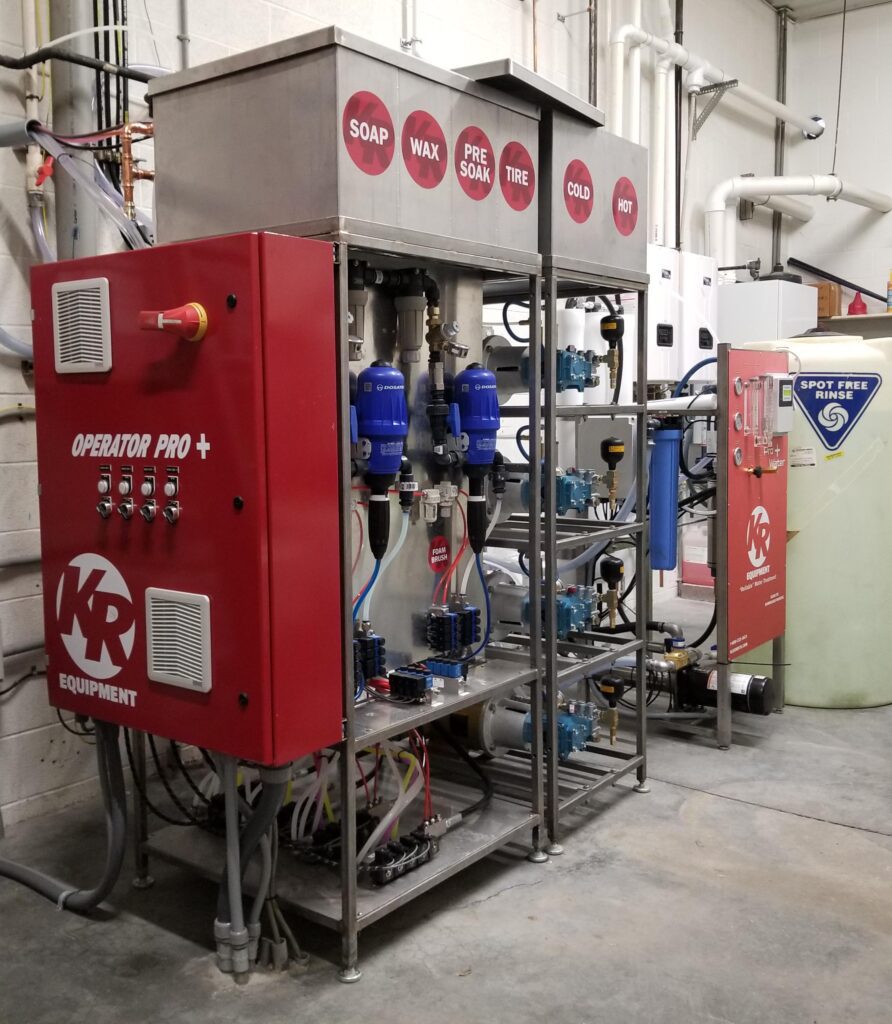Purchasing new equipment for your car wash is a daunting task. There are numerous features and specifications to review and consider before making a decision. One of them is variable frequency drives or VFDs. These devices improve efficiency, performance, and the lifespan of car wash machinery. Whether you are a car wash owner, purchasing agent, or operations manager, understanding the benefits of VFDs when making buying decisions is crucial to ensure you invest in technology that enhances productivity and profitability. An extremely effective way to optimize your car wash operations is VFDs. Let’s dive into how they work and why they’re a game-changer.
- What is a VFD?
- How Does a VFD Work?
- What Are VFDs Used For?
- How VFDs Work in Different Car Wash Systems
- Why Car Washes Need VFDs
- Things to Keep in Mind Before Choosing VFD Technology for Your Equipment
- Choosing the Right VFD for Your Car Wash
- Where to Install a VFD
- Maintaining Your VFD for Long-Term Performance
- Why Choose New Equipment with VFDs?
- Kleen-Rite’s Operator Pro Plus
What is a VFD?
Before we dive into the benefits and applications, it’s essential to understand what this device is and how it works. A variable frequency drive (VFD) controls a motor’s speed, known as rotations per minute (RPM). This allows the motor’s speed to be adjusted as demand increases and decreases. Unlike traditional motors in a car wash that operate at a fixed speed, a VFD-equipped motor adapts its speed, ramping up or down as the workload changes. This improves energy efficiency and performance.
Another name you might encounter for VFD is variable speed drive (VSD).
How Does a VFD Work?
A variable frequency drive takes an alternating current (AC) input and converts it into a direct current (DC). Once the current has been switched to DC, the VFD controls the Hertz rate, allowing the motor’s speed to be adjusted. The current is then flipped back to AC to control the motor. This process enables the motor speed to be adjusted as demand fluctuates.
What Are VFDs Used For?
Any motor-operated equipment can be upgraded with a VFD. Applications include motors utilized in car washes, HVAC systems, water treatment plants, manufacturing, and many other industries. If you operate an in-bay automatic car wash, there might be a VFD integrated with the machinery, and you might not even know it. This is why some equipment requires a technician with specialized training to service it or make repairs.
Common Applications:
- Car Washes – Pumps, blowers, conveyors, brushes, carriage
- HVAC Systems – Fans, compressors
- Water Treatment Plants – Pumps, agitators
- Manufacturing – Conveyor belts, production lines
How VFDs Work in Different Car Wash Systems:
- Pumps: The flow rate is dynamically adjusted to prevent dangerous pressure surges.
- Blowers/Dryers: Dynamically manage airflow to provide superior drying results and use less electricity.
- Conveyors: Adjust belt speed based on vehicle spacing and throughput to ensure a smooth flow and eliminate congestion.
- Vacuum Systems: Optimizes motor speed based on suction demand, reducing energy consumption when fewer vacuums are active. It also ensures reliable suction even when every vacuum station is in use.
Why Car Washes Need VFDs:
Variable frequency drives offer many benefits to car wash owners that should not be overlooked.
Energy Savings:
Motors without a VFD installed run at full speed when they are called on by car wash equipment. This wastes energy and keeps your electric bill high. A motor equipped with a VFD will adjust the speed based on demand. This saves electricity, which decreases your monthly energy costs substantially.
Soft Start and Stop Benefits:
The traditional starter creates electrical spikes and mechanical stress as it jolts the motor into action. When equipped with a variable frequency drive, a motor ramps up to speed instead of jolting into action. This helps to increase the longevity of your motor.
Improved Equipment Longevity:
Sudden starts and stops strain the motor and place excessive stress on the pumps and other connected equipment, leading to faster wear and potential breakdowns. A VFD will reduce the frequency of repairs and breakdowns, freeing up extra time that would have been spent repairing the equipment.
Better Water Pressure Control:
Since car washes rely on water pressure to wash vehicles, providing consistent pressure is crucial to delivering a clean vehicle. VFDs allow for precise control of pumps, preventing pressure surges that can damage equipment and pipes downstream.
Reduced Maintenance Costs:
Motors without a Variable Frequency Drive (VFD) operate only at full speed, requiring rapid acceleration to reach that speed. This sudden surge increases mechanical stress, leading the components of equipment powered by the motor to wear out faster. With a VFD’s soft start feature, the motor gradually ramps up to speed, reducing wear and tear, minimizing downtime, and lowering maintenance costs.
Things to Keep in Mind Before Choosing VFD Technology for Your Equipment:
While the benefits of a Variable Frequency Drive (VFD) far outweigh the drawbacks, there are a few key factors to consider before investing in equipment with a VFD.
- Initial Cost: VFDs are more advanced and require programming. They also have a higher upfront cost than traditional motor starters. However, the long-term energy savings and improved efficiency make them a worthwhile investment for your car wash!
- Complexity: Variable frequency drives require proper setup and should be programmed by a qualified professional to ensure proper function. When you purchase equipment from us at Kleen-Rite, it arrives pre-programmed for easy installation and reliable performance.
Choosing the Right VFD for Your Car Wash:
When purchasing a variable frequency drive, there are some important things to look at before you order to ensure you get one that properly integrates with your motors.
- Motor Compatibility: Ensure the VFD’s specifications are compatible with your motor. Key factors to check include power rating, voltage, and phase requirements to ensure proper operation and efficiency.
- Environmental Conditions: Since car washes are very wet and humid, consider installing the drive in a NEMA-rated VFD enclosure to prevent water damage and excessive moisture buildup.
- Vendor Support: Choose a supplier who offers installation, programming, and maintenance support. This makes it easier to install, operate, and maintain your VFD.
- Additional Features: Some VFDs offer enhancements like remote monitoring and automation. You can track real-time performance and streamline various processes for improved efficiency.
Where to Install a VFD:
A variable frequency drive should be mounted in a dry, well-ventilated location. Additionally, the space should be free from extreme heat, moisture, and direct sunlight. We highly recommend a NEMA-rated enclosure to protect from water exposure in car washes. This will help ensure the VFD’s longevity.
Maintaining Your VFD for Long-Term Performance:
Once a VFD is installed, it’s essential to maximize your investment by properly maintaining it to ensure long-term performance and reliability.
- Regular Inspections: Dust and debris can get inside the enclosure and prevent the fans and vents from cooling down the VFD, causing it to overheat. Inspect and clean them regularly.
- Clean Out the Enclosure: Remove dirt and debris from the enclosure. Don’t use compressed air. It will push dirt and dust further into the crevice, which is more harmful to the control panel in the long run. Use a vacuum and make sure the suction is not too strong. You don’t want the suction to pull connections loose.
- Check for Fault Codes: Modern VFDs display error messages when something goes wrong. If you catch these warnings early enough, you can prevent major failures and costly damage to your equipment.
- Secure Electrical Connections: Check for loose wiring. If a wire is loose, fluctuating voltage can cause damage. If you spot loose wire connections, secure them to protect your equipment.
- Replace Filters: VFD control panels will also have filters. Check and replace them as necessary. Replacement frequency will vary depending on the filter design, materials, construction quality, and environmental factors.
Why Choose New Equipment with VFDs?
If you’re investing in new equipment for your car wash, choosing energy-efficient options with Variable Frequency Drives (VFDs) is essential. VFD-equipped machinery helps lower energy costs, comply with increasing energy regulations, and reduce wear on critical components. Beyond cost savings, VFDs give you a competitive advantage by improving equipment performance, minimizing maintenance, and appealing to eco-conscious customers who value sustainability.
When to Consider Installing a System with a VFD:
- You want to reduce energy costs.
- Your car wash machinery suffers frequent breakdowns due to high mechanical stress.
- You need better control over water pressure, conveyor speed, or airflow.
- You’re looking for a long-term investment to improve the operational efficiency of your car wash.
Kleen-Rite’s Operator Pro Plus:
When we introduced the Operator Pro Plus pump stand, it was only natural that the VFD sparked some questions. We filmed a video to answer common questions our customers ask about the VFD (Variable Frequency Drive) on our Operator Pro Plus pump stand, and wrote the blog you are currently reading. Built by experienced car wash professionals, the Operator Pro Plus is engineered to meet the intense demands of high-volume, self-serve bays. It delivers a reliable, high-performance pumping solution that helps maximize wash quality, reduce downtime, extend equipment life, and lower repair costs. Available in configurations for 2 to 8 bays, it’s a great system for car washes of any size. Learn more about the Operator Pro Plus here!
Final Thoughts:
Investing in Variable Frequency Drives (VFDs) is a smart move for any car wash owner looking to improve efficiency, reduce energy costs, and extend the lifespan of their equipment. By optimizing motor performance, VFDs help lower maintenance needs, enhance operational control, and provide a competitive edge in an industry where efficiency matters. Whether upgrading existing systems or purchasing new equipment, integrating VFD technology can lead to significant long-term savings and a smoother, more reliable car wash operation!
About the Author
Phil Donnelly, aka Fix-It Phil
Kleen-Rite Equipment Engineer, Production Manager, Car Wash Operator
Best known for his “Fix-It Phil” persona on Kleen-Rite’s YouTube channel and podcast Kleen-Rite Radio, Phil Donnelly has become a trusted source of technical expertise for car wash owners, operators, and technicians. Beyond his on-screen guidance, Phil was the driving force behind the Operator Pro Plus pump stand, leading its design, testing, and production to create a highly effective solution for self-serve car washes. He also serves as the lead engineer and production manager for KR Equipment, our reliable line of car wash equipment designed and produced in-house specifically for the self-serve segment of the industry.
Before joining Kleen-Rite, Phil spent over 14 years servicing industrial boilers at Delval Equipment. This experience provided a strong technical foundation, enabling him to quickly master the equipment used in car washes due to the similarity of the required skills and knowledge. Phil attended Thaddeus Stevens College of Technology and graduated from the HVAC-R program with an Associate Degree.




